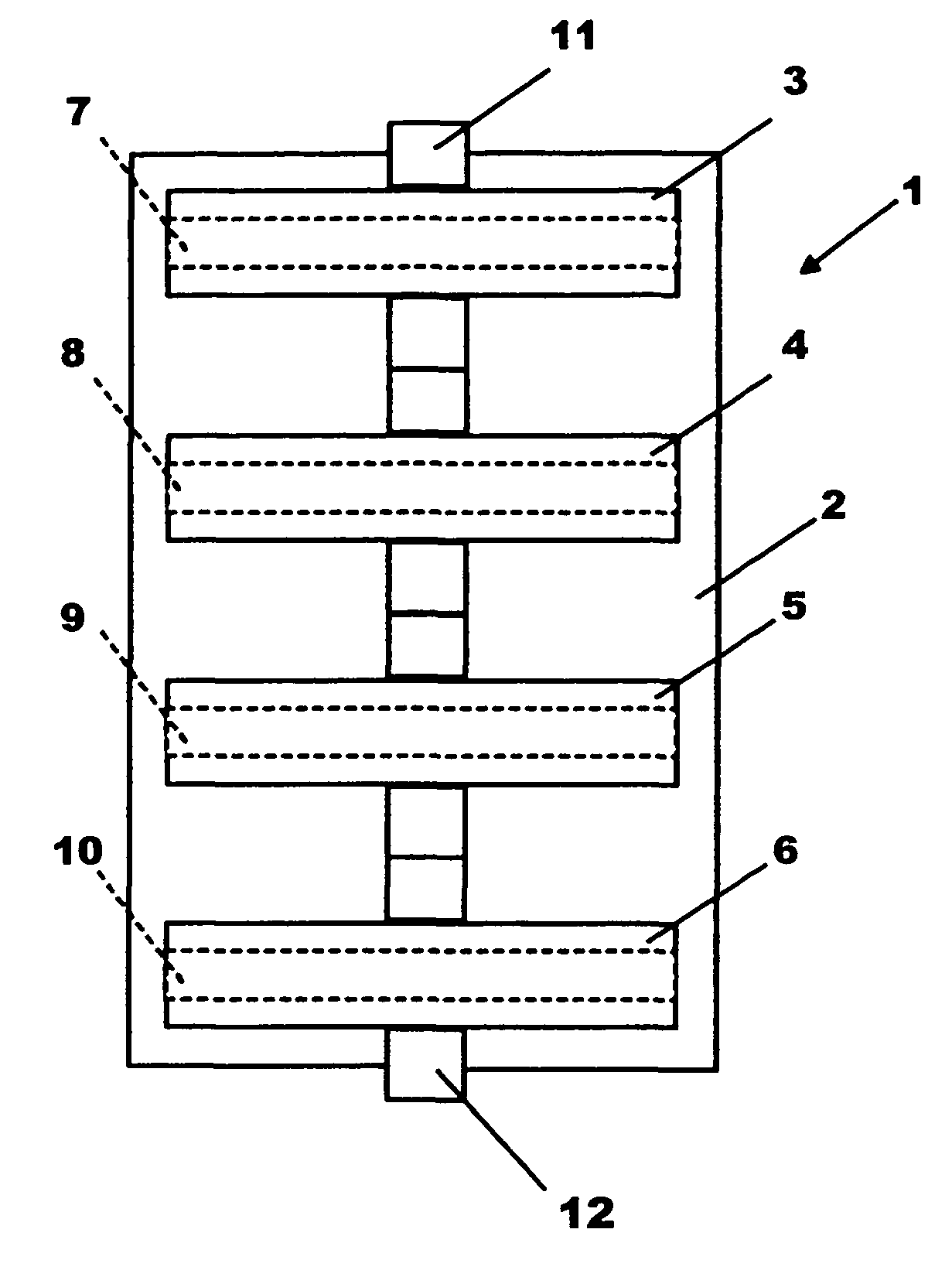Membrane, device and method for removing proteases from liquids
a protease inhibitor and membrane technology, applied in the field of stable pharmaceutical solutions, can solve the problems of limited solubility of synthetic protease inhibitors, unsatisfactory side effects for patients, and potential dangers of such protease inhibitors
- Summary
- Abstract
- Description
- Claims
- Application Information
AI Technical Summary
Benefits of technology
Problems solved by technology
Method used
Image
Examples
example 1
[0020]The serine protease inhibitor p-aminobenzamidine (Sigma, Deisonhofen Order No. A-7148), was dissolved in 0.05 M potassium phosphate buffer, pH 8.0, at a concentration of 20 mg / mL. Ten 25 mm-diameter regenerated cellulose functionalized (epoxy-activated) microporous membranes (Sartobind® epoxy from Sartorius AG of Göttingen, Germany) were incubated overnight in the protease inhibitor-containing phosphate buffered solution at 45° C. to chemically couple the serine protease inhibitor to the membranes via the membranes' epoxy functional groups. The membranes / membrane bodies were rinsed several times with a phosphate buffered saline (PBS) solution. Three of the 10 membranes were inserted in series into a filter holder (Sartorius Part No. 16517). The serine protease trypsine from bovine pancreas (Sigma, Order No. T-8003, Lot No. 28F-8065) was dissolved in PBS at a concentration of 1 mg / mL. Ten mL of this solution was then gravity filtered through the three membranes, followed by rin...
example 2
[0023]The cysteine protease inhibitor leupeptin (Sigma, Deisenhofen, Order No. L-2033) was dissolved in a 0.05 M potassium phosphate buffer, pH 8.0, at a concentration of 20 mg / mL. Ten epoxy-activated membranes / membrane bodies of the type used in Example 1 were incubated overnight in this solution at 45° C. to chemically couple the cysteine protease inhibitor to the membranes via the membranes' epoxy functional groups. The membranes were rinsed several times with PBS. Three of the 10 membranes were inserted into the same type of filter holder used in Example 1, the cysteine protease papain from Carica papaya (Merck Art. No. 7144 Ch. 911 F739244, 30 000 USP—U / mg) was dissolved at a concentration of 2 mg / ml in the following four-component buffer: 1.1 mM EDTA, 0.67 mM mercaptoethanol, 5.5 mM cysteine and 50 mM Na-acetate, pH 5.5 and allowed to react for at least 30 minutes at room temperature. The enzymatic activity of papain in the various fractions was determined with the synthetic s...
PUM
 Login to View More
Login to View More Abstract
Description
Claims
Application Information
 Login to View More
Login to View More - R&D
- Intellectual Property
- Life Sciences
- Materials
- Tech Scout
- Unparalleled Data Quality
- Higher Quality Content
- 60% Fewer Hallucinations
Browse by: Latest US Patents, China's latest patents, Technical Efficacy Thesaurus, Application Domain, Technology Topic, Popular Technical Reports.
© 2025 PatSnap. All rights reserved.Legal|Privacy policy|Modern Slavery Act Transparency Statement|Sitemap|About US| Contact US: help@patsnap.com

